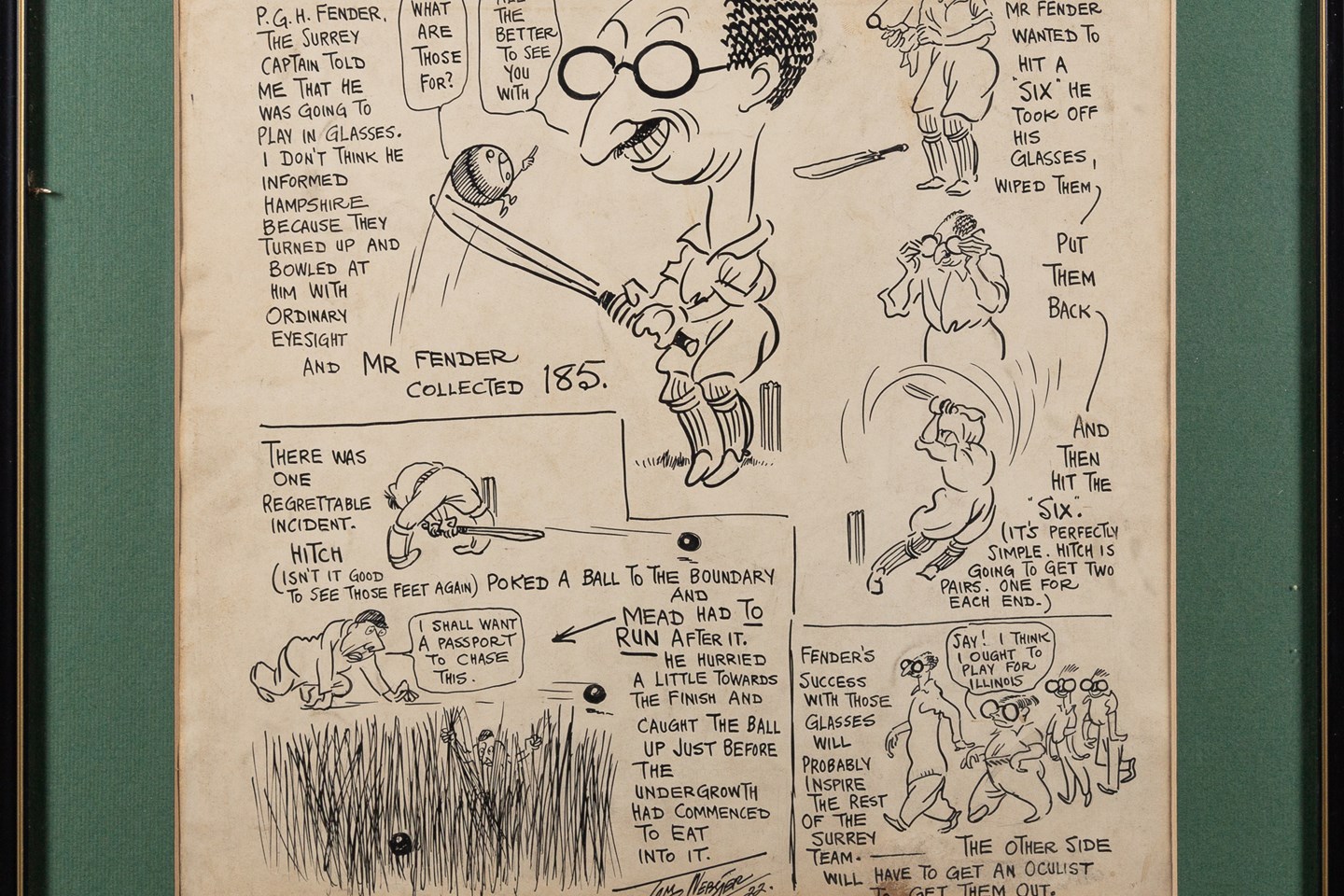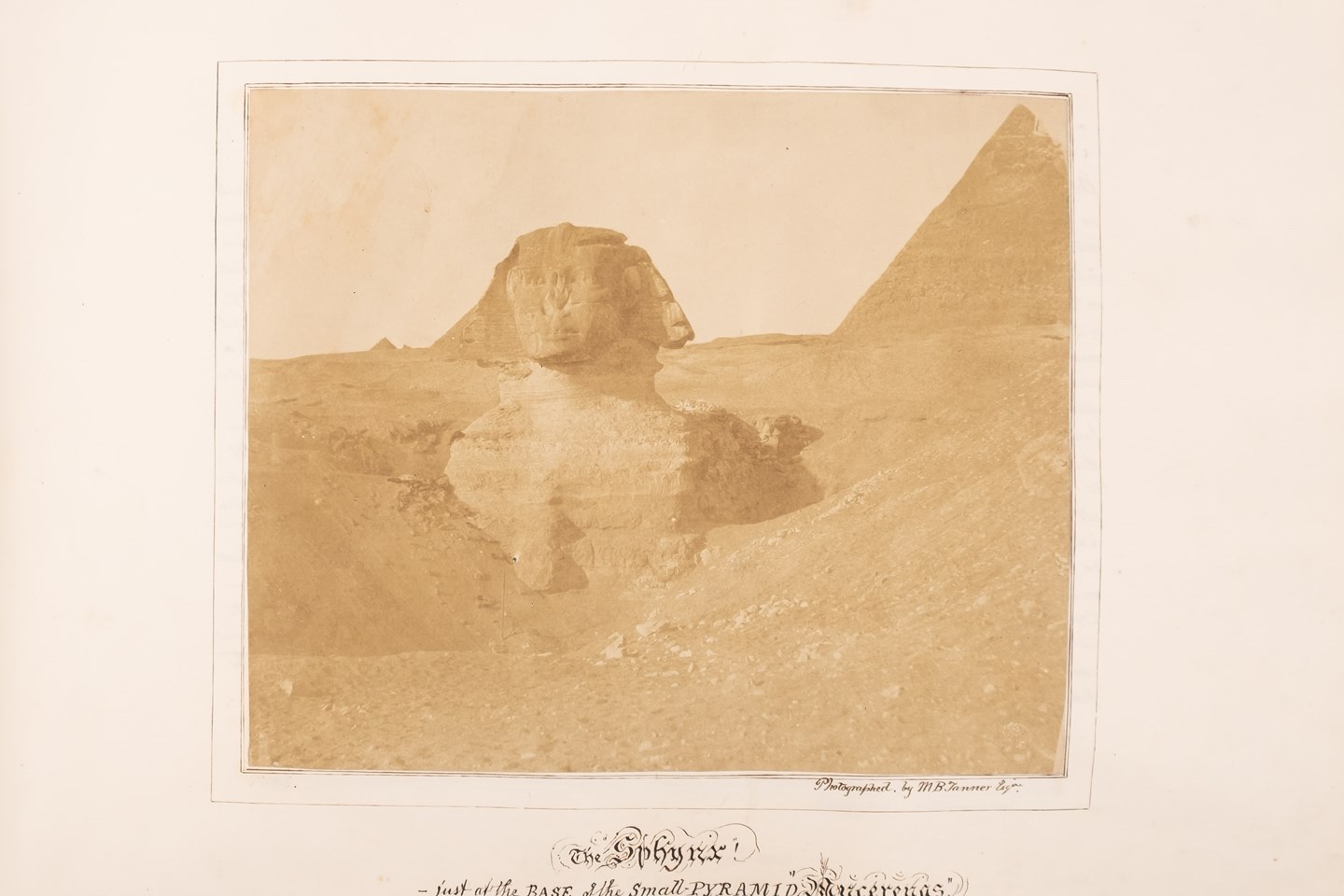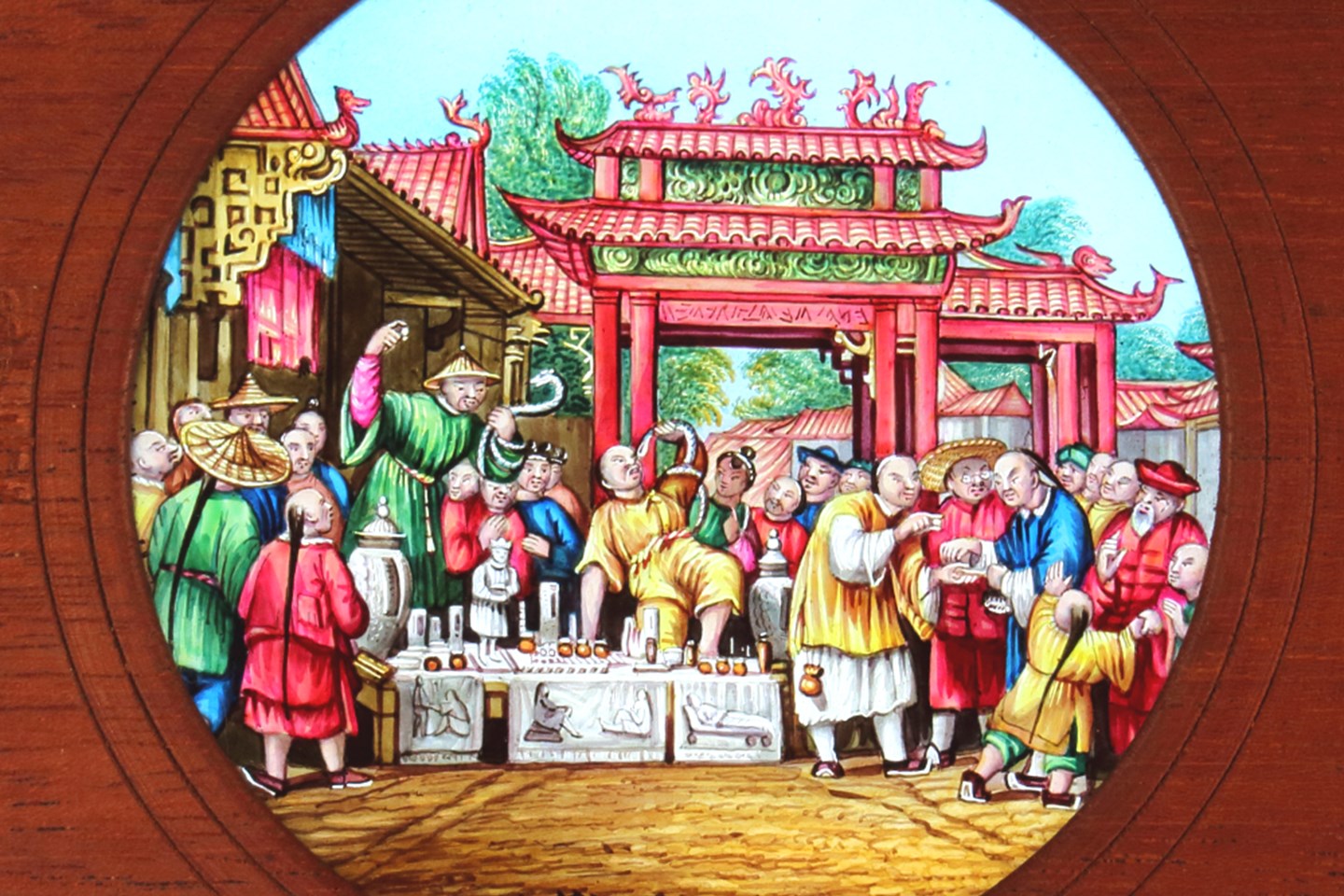From Joseph Mallord William Turner to Ben Nicholson, artists have been drawn to the West Country for over two centuries.
In 1811, Joseph Mallord William Turner was commissioned by the publishers William and George Cooke to embark on a sketching and painting trip to the West Country. Turner set-out to record the landmarks and towns along the coast from Dorset to Lands End and on to the Bristol Channel.
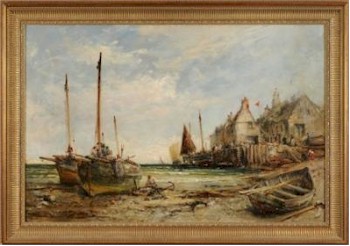
A Cornish Fishing Village painted by William Web Ellis (1862-1903) (FS18/379).
The trip took about eight weeks to cover the coastlines of Dorset, Devon, Cornwall and Somerset. Although, Turner and the Cooke brothers fell-out in the process and the project was abandoned, Turner filled several sketch books, produced watercolours and also prepared a number of major oil paintings like St Mawes at the Pilchard Season, which was completed in 1812 and is now in Tate Britain, London.
Turner never returned to Cornwall, but his visit and the resulting paintings raised the profile of the West Country to generations of future artists.
When Isambard Kingdom Brunel's railway bridge across the Tamar to Saltash was complete in 1859 and track was laid into Cornwall, including a branch line to St Ives in 1877, a new landscape was opened to artists. The railway meant that painters could travel in relative comfort and speed, work for a Summer, and return to London in the Autumn for the Academy exhibitions.
St Ives offered the lure and excitement of an adventurous railway journey through a wild and picturesque landscape that culminated at an inspirational location.
In 1843, the art critic John Ruskin had written an influential treatise imploring artists to paint 'true to nature'. This plea to painters, together with other notable treatise and works including Charles Darwins's The Origin of Species, published in 1859, meant real public momentum behind exploring and looking with new eyes at the rocks, geology and nature of the landscape.
There were also painters, poets and writers looking out from the coast to the ocean and lauding the cliffs and rocks as defenders of this sceptered isle and fishermen and sailors as the noble knights and farmers of the sea.
The painting of a Cornish Fishing Village that we sold for £2,800 in 2013, by William Webb Ellis (FS18/379) and the watercolour titled Mackerel in The Bay (FS17/439) which sold for £1,800, are two nice examples of this.
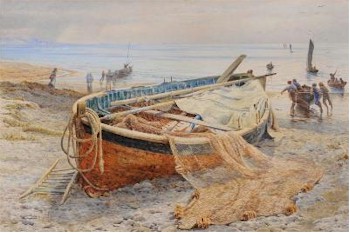
A 19th century British School watercolour, entitled 'Mackerel' (FS17/439).
In Cornwall, two art colonies sprang up. In the 1880s, the Newlyn School was united in a desire to paint in the elements in a naturalist style using the locals as their subjects.
The artists were largely British and many were linked to the London art scene with Walter Langley, Alfred Munnings, Stanhope Forbes, Norman Garstin and Henry Scott Tuke in their number.
Garstin's spectacular oil of 1889 The Rain it Raineth Every Day has all the quality of an early French Impressionist painting of a Parisian Street and is now in the Penlee House Gallery and Museum Collection.
Across the bay, and of a more international flavour with Scandinavians, Australians, Americans and Europeans, was the St Ives colony, many of whom had studied in Paris.
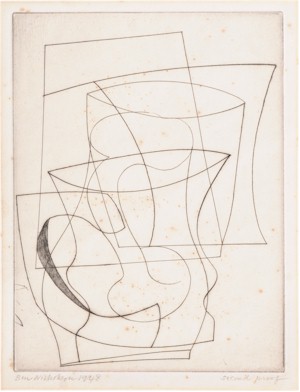
An untitled drypoint etching, signed by Ben Nicholson (1894-1982) in the margin, sold for £5,200 in 2011 (FS9/425).
And so, by the 1920s, there had been nearly 50 years of plein air painters in the streets and pubs and bays around St Ives and Newlyn. In 1928, Christopher Wood, a young British artist whose head was turned very strongly towards the international scene, Picasso and Jean Cocteau, together with his friend and painter Ben Nicholson, visited St Ives.
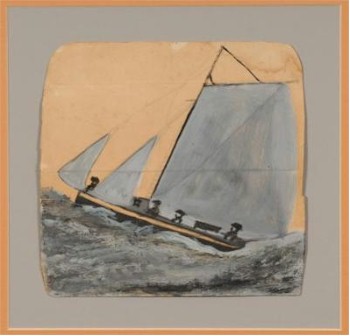
The Mariners by Alfred Wallis (1855-1942) (FS18/334), which sold for £8,200.
While in St Ives, they discovered Alfred Wallis, a retired and widowed mariner. Wallis was painting his seafaring recollections and memories on salvaged board and scraps of card and his untutored, direct and naïve style struck an immediate chord with Nicholson and Wood [FS09/430]. This meeting was a significant moment in the direction that Modern British Art took in the 20th Century.
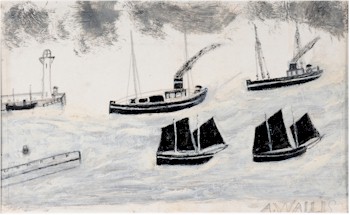
Harbour Appoaches by Alfred Wallis (1855-1942) (FS18/334), which realised £22,000 in 2011.
- Bearnes Hampton & Littlewood
- Modern British Art
- Newlyn School of Art
- St Ives School of Art
- Joseph Mallord William Turner
- William and George Cooke
- John Ruskin
- Ben Nicholson
- Walter Langley
- Alfred Munnings
- Stanhope Forbes
- Norman Garstin
- Henry Scott Tuke
- Jean Cocteau
- Pablo Picasso
Two Centuries of Painters painting the West Country was written on Tuesday, 25th June 2013.







